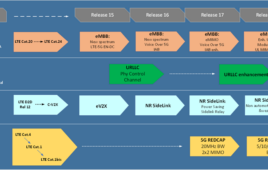The days are fading fast when businesses dictated which wireless devices their employees could and could not use.
The way enterprise mobility has gone, it’s not unusual for an employee to buy a smartphone, bring it to their IT department and demand to be accommodated.
The rapid adoption of consumer-grade products by employees, known in industry jargon as the “consumerization of IT,” has forced the enterprise space to become more flexible. But while that flexibility has been warmly received by workers, it’s opened up a host of problems for businesses around security, device management and the distribution of mobile content.
Verizon released two new products this week that help strike a balance between the control sought by the enterprise sector and the flexibility sought by employees, a unified communications client for smartphones and a private app store for businesses.
Benigno Gonzalez, Verizon Wireless vice president of sales operations for enterprise and government, explains that corporations want to build apps for their workers, but they don’t necessarily want to distribute those apps through public app stores, where anyone could get a hold of their proprietary software. So Verizon came up with a way for the enterprise sector to distribute apps as it sees fit through a private storefront for iOS, BlackBerry and Android applications.
“It gives the level of security that enterprise customers are looking for, but also gives an opportunity for workers to access apps open to consumers,” Gonzalez said.
Verizon’s private enterprise app store includes a portal for administrators to manage the service, a portal for end users and an on-device client for branding.
By addressing businesses’ concerns about how their apps are distributed and who is accessing the information, Verizon hopes more corporations will build apps. Hallmark and Thomson Reuters were part of early customer trials.
“This is going to be an accelerator of adoption of applications in the enterprise segment,” Gonzalez said.
Verizon’s other new enterprise mobility product gives mobile workers all the capabilities they have on their office line, such as four-digit extension dialing, call transfers, conference calls and voicemail. It can also be used to route calls through a business’ existing PBX system and display the employee’s business number to callers, instead of their private cell number.
Workers simply place a call, then select whether to place it as a business call or mobile call. Verizon is selling an option docking station with Android smartphones that connects to Ethernet, so calls don’t count against user’s voice minutes.
“As a mobile worker, you have full access to the capabilities you have in the office,” Gonzalez said of the unified communications client. The service is currently available for five of Verizon’s Android devices.
Businesses know they need to adopt mobile technology to stay competitive, but they want to maintain a modicum of control over their apps, information and employees. Verizon, like many other companies in the wireless space, is helping the enterprise sector find that middle ground.




